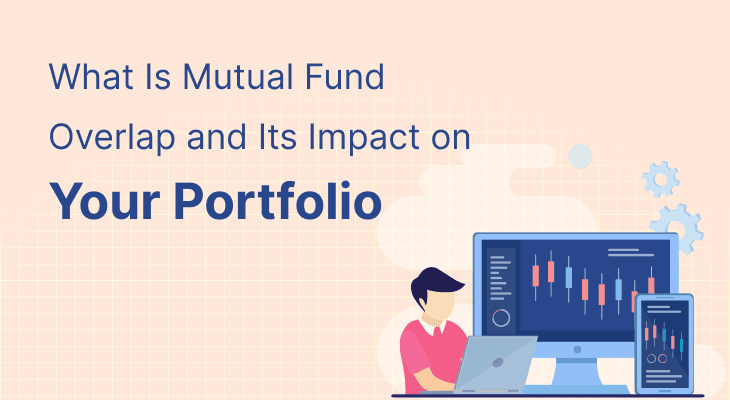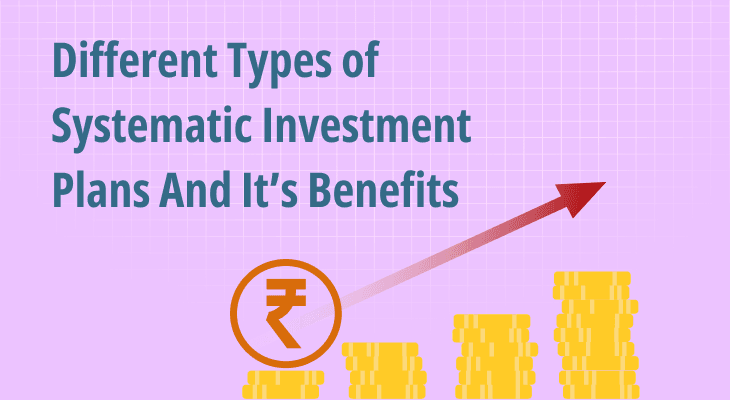
What are Open-Ended Mutual Funds?
The mutual fund market in India is diverse and dynamic. Today, investors who wish to invest in mutual fund schemes have a variety of options to choose from. Mutual funds can be categorised into different groups based on several aspects like the type of assets they invest in, the duration of investments and the investment strategy followed.
It’s also possible to classify mutual fund schemes based on their liquidity, into open-ended and close-ended mutual funds. You may have come across these terms and wondered what open-ended mutual funds are. Keep reading to understand the meaning of open-ended mutual funds, how they work and how they differ from close-ended funds.
What are Open-Ended Mutual Funds?
An open-ended mutual fund is an investment scheme that you can invest in or exit at any time. In other words, you can purchase units of these mutual funds and/or redeem your holdings in these schemes on any business day. This is the most common type of mutual fund available in the Indian financial markets.
Like all mutual fund schemes , open-ended mutual funds are also issued via a new fund offer (NFO). You can purchase units in these funds either at the time of the NFO or on any subsequent business day. There is no restriction on when you can invest in these schemes.
Similarly, open-ended mutual funds also do not have any lock-in period. You do not have to remain invested in these schemes for a fixed tenure. You can redeem your holdings on any business day at the prevailing net asset value (NAV) of the fund’s units. This sums up the meaning of open-ended mutual funds and how they work.
Features of Open-Ended Mutual Funds
Now that you have the answer to what open-ended mutual funds are, let’s take a closer look at the features that define these investment vehicles. This will give you a better idea of whether or not open-ended funds are the ideal choice for your portfolio.
No Specific Maturity Period
As the meaning of open-ended mutual funds indicates, these schemes do not have any fixed maturity date or period. You can buy or sell units in these funds at any time. This is their most defining and characteristic feature.
NAV Calculation
The NAV of an open-ended fund is calculated at the end of every business day based on the closing market prices of the securities in its portfolio. Being aware of the NAV is important because it determines your profits or losses upon redemption.
Fluctuating Fund Size
The size of a mutual fund scheme is determined by the assets under management (AUM) — which is essentially the total market value of all the securities held in the scheme. For open-ended funds, the AUM fluctuates daily based on the inflow (from new investments and dividend reinvestment) and outflow (from redemptions).
Professional Fund Management
Many open-ended mutual funds are actively managed by professional portfolio managers. These experts make the key decisions regarding the investments to be made and the portfolio rebalancing required, if any, based on extensive research.
Minimum Investment Requirement
Most open-ended funds have a minimum investment requirement. This can vary from one fund to another. You can also invest in these funds via a Systematic Investment Plan (SIP) with as little as Rs. 500 or even lower, depending on the terms and conditions.
Fees And Expenses
Open-ended mutual funds come with certain charges like management fees, redemption fees and more. You may also have to pay entry and/or exit loads based on the terms and conditions of the scheme.
Diversified Portfolio
Open-ended mutual funds also have a diversified portfolio that could include various assets like equity, debt, money market instruments and more. The asset allocation across these different asset classes will vary from one fund to another based on the fund’s objectives.
Benefits of Open-Ended Mutual Funds
Having seen what open-ended mutual funds are and what their key features include, you can now better appreciate the benefits they offer. Check out the advantages of these mutual funds below.
High Liquidity
Open-ended mutual funds allow investors to buy and sell units on any business day. This means that you can redeem your investments and get your money back whenever you need it. The mutual fund house is obligated to buy back the units at the day's net asset value (NAV).
Suitable Across Market Cycles
Open-ended funds allow you to adapt to changing market conditions. Since they have no lock-in period, you can invest or redeem your units at any time. This means you can optimise your portfolio based on the current market cycle and make strategic investment decisions promptly.
Convenient Investments Vis SIPs
Systematic Investment Plans (SIPs) in open-ended mutual funds help you invest in the markets in a consistent and disciplined manner. By allocating a fixed amount at periodic intervals regularly, you can mitigate the risk associated with timing the market. The periodic nature of SIPs also offers the advantage of rupee cost averaging.
Flexibility
Open-ended mutual funds provide a high degree of flexibility to investors. Not only can you enter or exit a fund at any point without any strict restrictions, but you also have the choice to tailor your investments according to your financial goals. Fund houses also provide flexible options like choosing between dividend or reinvestment options.
Regulation By SEBI
The Securities and Exchange Board of India (SEBI) oversees the functioning of mutual funds in India. Its stringent guidelines ensure that all mutual funds — including open-ended schemes — operate with transparency in the best interests of investors. Regular audits, mandatory disclosures and prompt corrective actions help protect investors' rights.
Open-Ended vs. Close-Ended Mutual Funds
Check out the key differences between open-ended and close-ended mutual funds below, so you can make a smart decision about choosing between the two.
Particulars | Open-ended Mutual Funds | Close-ended Mutual Funds |
|---|---|---|
| Meaning | Mutual funds that allow investors to buy and sell units at any time, since they don't have a fixed maturity date | Mutual funds with a fixed number of shares and a set maturity date, which are launched through a new fund offer and then traded on stock exchanges |
| Liquidity | Can be bought/sold on any business day from the fund house | Traded on stock exchanges like individual stocks, but liquidity depends on market demand |
| Issuance | Continuously available for subscription and redemption | Issued only once during the initial offer period |
| Net Asset Value (NAV) | Calculated daily based on the fund's assets and liabilities | NAV is calculated daily, but trading price may differ based on market demand-supply |
| Size of the Fund | Can vary daily due to continuous buys and sells | Fixed number of shares; size doesn't change after the issuance |
| Lock-in Period | Generally no lock-in period | Usually have a specific maturity or lock-in period after which the fund is liquidated |
| Pricing | Bought/sold at the day's NAV | Can trade at a premium or discount to its NAV |
| Flexibility | High flexibility to enter or exit based on investor's needs | Limited flexibility; entry/exit is through the secondary market |
| Dividend Distribution | Options like growth, dividend payout, or reinvestment available | Dividend options may vary, and some funds might offer periodic income |
Should You Invest in Open-Ended Mutual Funds?
Now that you know the meaning of open-ended mutual funds and how they are different from close-ended funds , you may want to know whether they can make a suitable addition to your portfolio. You should typically invest in open-ended mutual funds if:
You prioritise liquidity and want the flexibility to access your funds without waiting for a specific maturity date
You favour a systematic and disciplined approach to investing, such as SIPs
You value having your investments overseen by professional fund managers who adjust portfolios in response to market dynamics
You aim for diversification to spread risk across various assets, sectors, or companies
You appreciate the ability to adjust your investment amount in response to market conditions or personal financial situations
You like receiving regular updates and transparency regarding fund performance and assets under management
Conclusion
To sum it up, open-ended mutual funds are suitable investment vehicles for both beginners and experienced investors. No matter where you are on the spectrum of experience, these funds allow you to navigate the financial markets with ease. While they come with their own features and benefits, as with any investment, it's essential to understand the risks before you invest. You must also be aware of your financial goals, risk tolerance and investment horizon and make an informed choice.
SIPs let you invest small amounts regularly, making it easier to stay consistent with your goals. With time, your money grows faster through compounding, helping you get the most out of your investments. Try our SIP Calculator to see how your money can grow and make smarter plans for your future.


